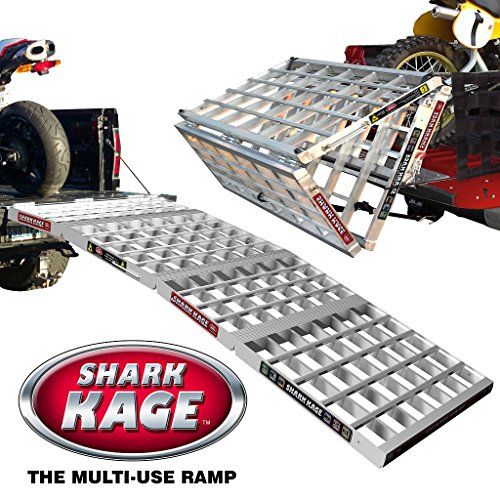Written by Brent Huntley in ATVs
My wife would claim I am the most forgetful person there is, and this has included the unfortunate forgetting of ATV ramps. While it can be a bit panic-inducing to realize you have made it somewhere and don’t have ramps to unload and reload your ATV into your truck, it really isn’t a big deal in most situations. I had someone teach me an easy way to load an ATV and thought it was worth passing on, along with another easy way I have used when available that is easier than ramps.
How do you load an ATV without ramps? If you have an elevated surface you can just back the truck into it and drive the ATV in. If you do not have such a surface, you can pop up the front of the ATV and roll the front wheels onto the tailgate before lifting the back end.
These methods sound pretty easy, and they are, but you are dealing with a heavy piece of equipment and there are some things that go wrong. We want to make sure you get your ATV to the trail for an awesome day of riding with no damage to your truck, your ATV or your body, so we detail out the processes step-by-step below. You may also want to check out our guide for nearly every truck bed to see how well your ATV will fit.
Lifting the ATV End by End
This method requires you to do a fair amount of heavy lifting. How heavy depends on the weight of your ATV. If you are getting up around 500cc or higher with a utility ATV like the Polaris Sportsman (pretty consistently the heaviest model in its cc class I could find). If you have a lighter sports model, even something like a 700cc Yamaha Raptor, and this should work great for you. Even a 300-400 pound quad may sound heavy, but it isn’t bad since you only lift one side at a time.
To lift your quad into a truck bed, just follow these detailed steps exactly to keep your ATV, truck and body safe.

 Make sure you lift with your legs and keep your back straight.
Make sure you lift with your legs and keep your back straight.That may have seemed like a lot of steps, but it shouldn’t take you more than a few minutes to easily get your ATV in your truck bed, if it isn’t too heavy, without the use of any ramps.
This may not be an option for everyone, but it makes it really simple to load an ATV into a truck bed if you have some kind of elevated surface to back your truck into. This could be a hill, a slanted driveway, a loading dock or many other things.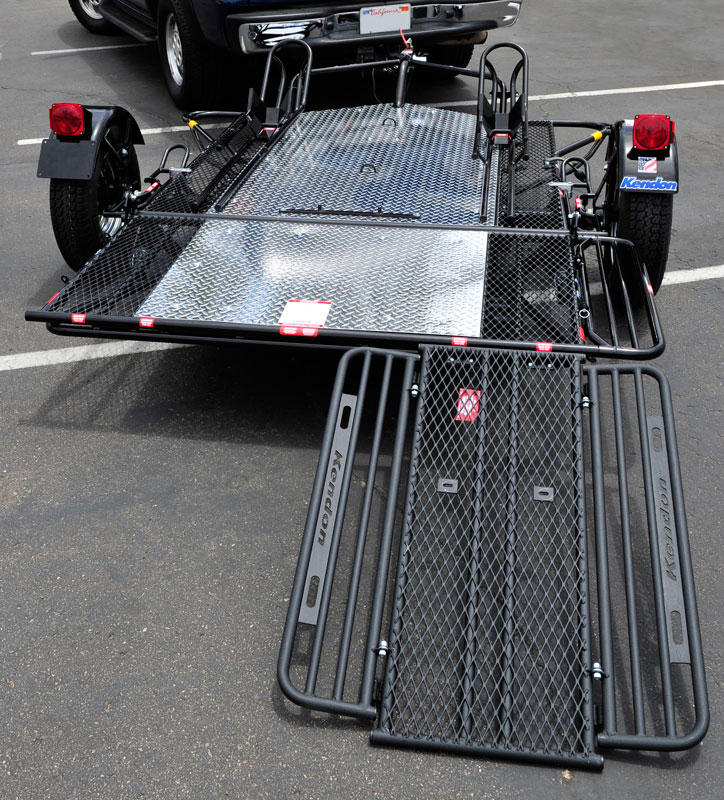 My house as a kid had a nice irrigation ditch in the front that worked well as we could drive an ATV from the yard right into the bed of a truck that had been backed into the ditch. To use this method, just follow these easy steps.
My house as a kid had a nice irrigation ditch in the front that worked well as we could drive an ATV from the yard right into the bed of a truck that had been backed into the ditch. To use this method, just follow these easy steps.
Something to keep in mind, if you have an elevated surface that doesn’t reach high enough for you to drive the ATV into the truck bed, is that you can use the method above to lift your ATV into the truck bed from an elevated position and it will make it a whole lot easier on your knees, arms and back.
How to Unload without RampsUnloading an ATV without a ramp is a little scary the first time you try it, but it is really easy and fast. Once again, the lighter your ATV, the easier this is going to be. Just pull it from the back grab bar. Pull it straight back, holding up the back end until the front tires reach the end of the truck bed. Then give it a little jerk so the front end clears the tailgate. Prepare yourself for a little bounce backward when the tires hit the ground.
Once again, the lighter your ATV, the easier this is going to be. Just pull it from the back grab bar. Pull it straight back, holding up the back end until the front tires reach the end of the truck bed. Then give it a little jerk so the front end clears the tailgate. Prepare yourself for a little bounce backward when the tires hit the ground.
Yes, you still should have ramps and use them whenever possible. Ramps are going to be the safest and easiest way to load an unload an ATV, and should be useable in any conditions.
Picking the right ATV ramps is not an easy task as it is going to depend a bit on your personal preferences and your hauling vehicle. Some people swear by a single piece ramp (as opposed to two tracks). These tend to be a bit safer and easier to use and are great for beginners. I personally don’t love them because they tend to be a little steeper and bulkier. Here is an example of a great tri-fold single piece ramp as an example.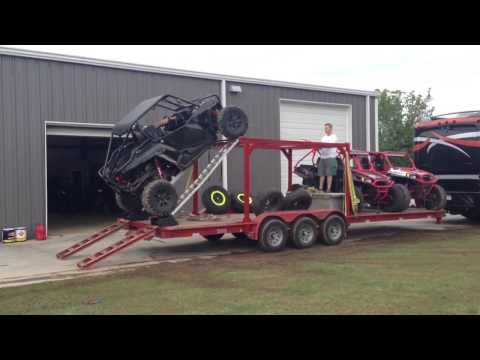
I personally prefer the ramps in our recommended gear because they are a bit cheaper, very sturdy and have arches so it easy to drive the ATV into the truck bed without accidently gassing it into the rear window of the truck.
Some considerations to keep in mind as you are buying and using ramps are below.

That’s it. There really isn’t much to loading an ATV, but it probably leads to nearly as many accidents as actually riding. Get some ramps and follow these tips, but don’t despair if you don’t have ramps. You can easily load the ATV even without ramps. Just make sure to do so safely.
How To Use An ATV Spreader
One of the greatest things about summer is yard work.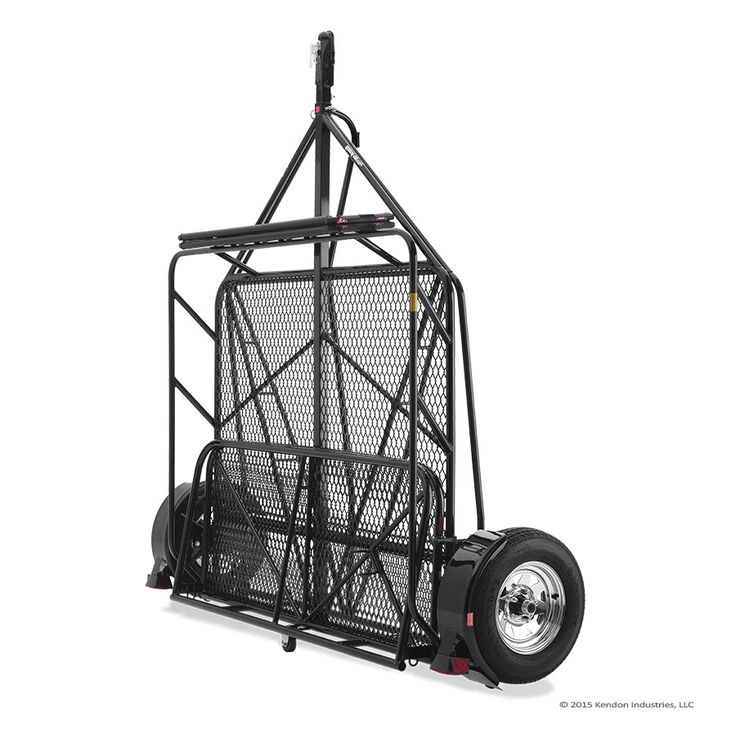 As the heat and humidity rise, so do the plants and flowers. The advent of technology has made seeding and fertilizing, a job that used to...
As the heat and humidity rise, so do the plants and flowers. The advent of technology has made seeding and fertilizing, a job that used to...
Continue Reading
link to When Should You Use High vs. Low Gear On Your ATV?When Should You Use High vs. Low Gear On Your ATV?
ATVs will provide any off-roader with a fun, thrilling experience. However, if you want to make the most of your ATVing trip without incident or frustration, it is important to know when and where to...
Continue Reading
For owners of ATVs who need to transport their quad to another location, the most common method is to either use a sufficiently sized pickup truck bed or to load the ATV into a trailer.
Of course, for the transportation process to go safely and smoothly, one must understand how to safely load the ATV first so it is secure during transportation.
Here’s a quick overview of the process of loading an ATV into a truck bed or trailer.
The majority of trailers will either have ramps attached or be low enough to the ground where you can easily purchase and use a small ramp that will allow you to safely load an ATV. But regardless of whether you’re using a trailer or the back of a truck, the most important thing is to make sure you a) have a ramp meant for the job and b) properly secure that ramp in position.
Ramps can be a potential safety hazard if they are not secured properly. If you do not have straps or another method of connecting them to the truck or trailer, they could slip off while you try to load the ATV, which could cause significant damage and injury.
6' 8" Tri-Fold ATV RampOnce your ramp is set up for safe loading, make sure you position the quad so you are lined up straight with the ramps. A crooked alignment with the quad could result in you flying right off the side of the ramps before you’re loaded.
Give it a little distance. Get about five to 10 feet back from the ramps and push the quad forward without turning the wheel. If the quad moves forward straight, you have a good alignment and can proceed.
Get about five to 10 feet back from the ramps and push the quad forward without turning the wheel. If the quad moves forward straight, you have a good alignment and can proceed.
Here’s the part that requires precision, patience and control.
Although you can load an ATV manually by pushing in up the ramp into your truck or trailer, the fastest way to load it is by carefully riding up at a controlled speed. This is why having your loading ramps completely secured to a metal part of the vehicle's frame is critical - if they aren't properly secured, there's a risk that they'll kick out or slip while you're on the ATV mid-ramp. That spells disaster for your ATV, for you, and possibly for any bystanders who could be hit by any of the fallout.
We always recommend having a spotter when loading any powersport vehicle. Not only is it a good safety practice in the event of a loading accident, they can provide a second set of eyes to make sure that your wheels are properly aligned with the ramps and that you're loading straight.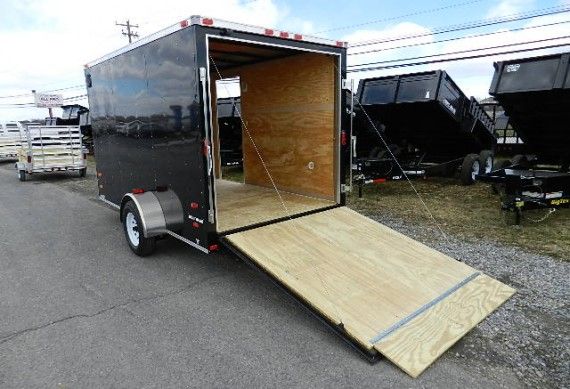
Although hard to do, keeping the ATV going at a controlled, steady speed up the ramp minimizes the amount of time you're on the ramp, and reduces the risk of something going on. By taking the time up front to set up properly, you can roll right on up and keep the jerky start-stop motion at bay.
Mac's ATV Wheel Nets are a good resource for keeping the quad secure without compressing the suspension.You’re not done once the ATV is in the trailer or truck bed. The next step is to secure it so it does not move around while being transported.
To accomplish this you’ll need a set of high-quality ratchet straps. Strap the front of the quad around the handlebars and keep the ends hooked in around the front tire inside the truck bed or trailer. This will provide enough forward and downward tension to prevent the ATV from bumping and moving during transportation. The second strap will then pass through the grab bar and down to the rear wheel, where it will provide slight tension down and to the back, preventing the back from bouncing during transportation.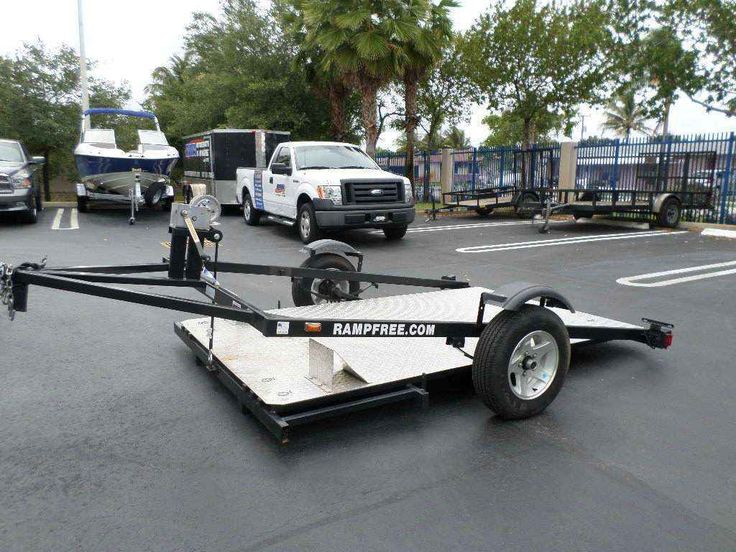
Before you go anywhere, make sure you grab on to the handlebars and give the ATV some pushing and pulling. It shouldn’t move or wiggle at all. If it does, you’ll need to increase the tension and/or potentially add another strap so you can better keep the quad in place.
Follow these steps and you’ll be able to safely transport your ATV wherever and whenever you need without a whole lot of extra equipment necessary!
A rare bike will fit in the trunk of even the most spacious station wagon. For transportation, you will need a special vehicle, trailer or structure. In this article, you will learn about transportation methods, how to properly get into a trailer or van, and how to secure the motorcycle so as not to damage it during transportation.
The easiest and most reliable way. For transportation of a small motorcycle, both cargo and passenger minibuses are suitable. If the model is large, you will have to take a cargo van or remove the seats from the passenger van.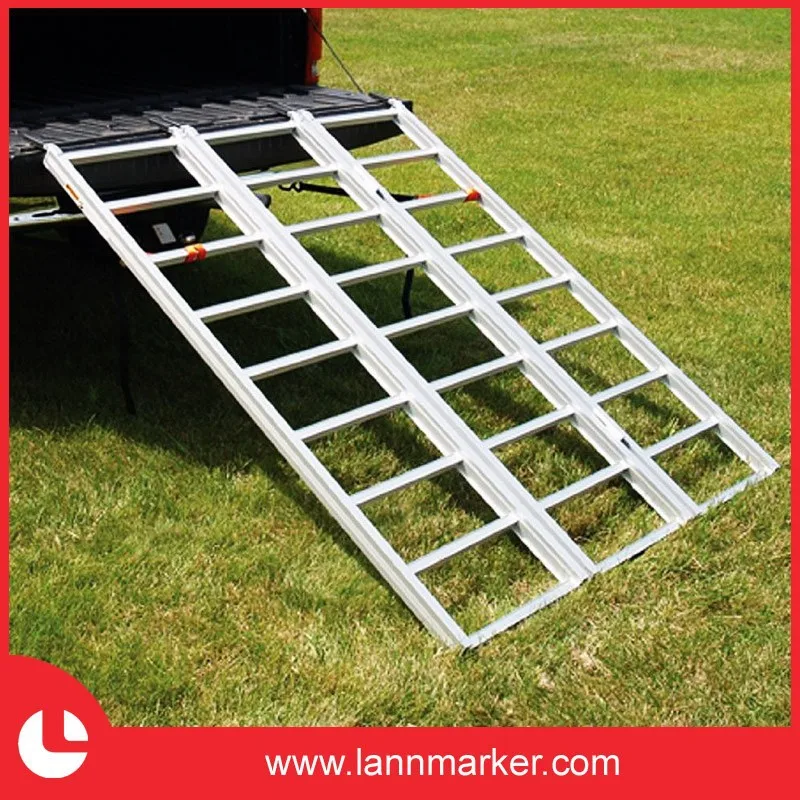
Pickups differ in cab size and body length: the larger the cab, the smaller the body. But this does not bother drivers, because the motorcycle can be installed diagonally. Rear-wheel drive pickups are more suitable for transportation, as they have a lower loading height than four-wheel drive.
An alternative is to put the rear wheel of the motorcycle on an open side. It sounds risky, but the board of pickups is resistant to loads, and traffic rules do not prohibit it.
The special trailer is already equipped with all necessary fastenings. A driver with category B can afford a trailer with a carrying capacity of up to 750 kg - this will fit a couple of medium-sized bikes.
You can also prepare a conventional trailer yourself:
A rather specific option that is only suitable for light models or scooters.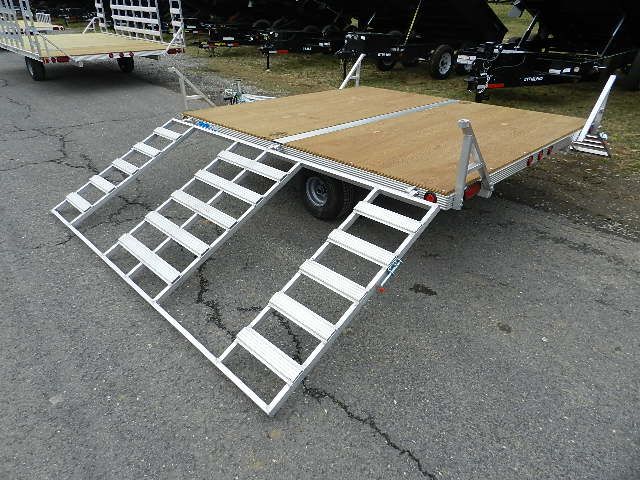 Most importantly, make sure that the motorcycle is firmly on the ground and does not block the license plate or lights of the car before starting the ride.
Most importantly, make sure that the motorcycle is firmly on the ground and does not block the license plate or lights of the car before starting the ride.
Partial loading is the most mobile and cheapest option.
Be careful, the method has pitfalls:
Use a wheel catcher to secure the wheels. It will easily hold a model of any weight. The trap must be screwed to the floor of the body of a pickup truck, trailer or van.
Traps can be:
If there is no trap, use the side stand, treadmills, center stand - in short, everything that will help keep the bike from swaying.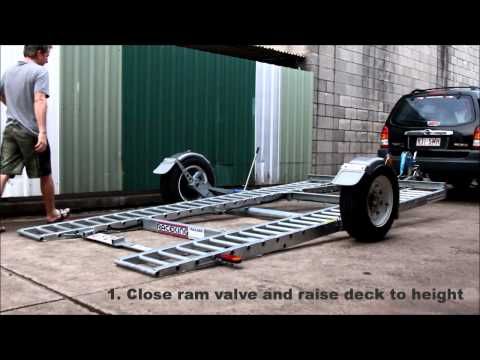
Also be sure to secure the motorcycle with straps and buckles. But without fanaticism: some aluminum parts can be deformed from excessive load. Make sure that the straps do not rub against plastic or wiring, so as not to abrade the case and cause electrical problems.
A pit bike or scooter can be handled without special tools, but larger models have ramps and ramps.
Ramp selection is an important step. There are models with side boards that will not let the motorcycle come off, and there are without them. Ramps and ladders come in different lengths, the angle of inclination depends on it. It is important to make sure that the climb will be within the power of your motorcycle. Therefore, we recommend measuring:
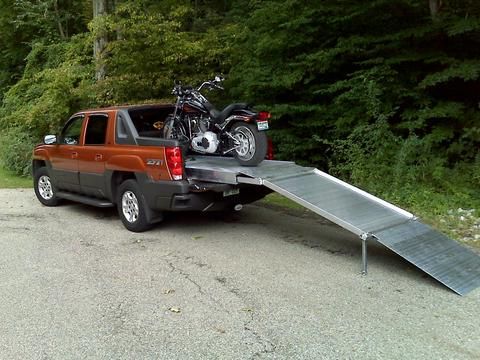
One end of the ramp is fixed to the side of the trailer or van, while the other end is pressed into the ground. It is better if you roll the motorcycle with your hands, otherwise there is a chance of overgassing or even pulling off the ramp.
So, the bike is loaded and secured. And then a test run. To check if the bike is secure, ride it for a couple of kilometers. Check if it dangles, if the belts are pressed. Both can backfire during a sharp turn or sudden braking.
If you are traveling far, we recommend that you do not exceed 90 km/h and stop periodically to check the position of the motorcycle.
Have a good motorcycle season!
Pickup is cool. The pickup truck was driven by Tough Walker, who administered Texas-style justice. You can throw a bunch of very cool things into the body of a pickup truck, for example, a racing sportbike or a jet ski. Finally, in youth slang, the word pickup (pick-up) means a quick acquaintance with a completely unfamiliar and mostly beautiful girl, which is also considered very cool
Sergey Apresov
Item 1 of 2
1 / 2
Nissan Navara Engine: turbo diesel // Displacement: 2488 cm3// Maximum power: 174 HP // Maximum torque: 403 Nm // Maximum speed: 170 km/h // Gearbox: automatic // Front suspension: independent, double wishbone // Rear suspension: dependent, spring // Brakes: front: ventilated disc // Brakes rear: drum // ground clearance: 240 mm
Nevertheless, Russians prefer to use trailers for similar purposes, as supposedly more spacious and versatile vehicles. We decided to come out in defense of a cool car. To begin with, driving a trailer requires special driving skills. The trailer negates the maneuverability of the car and reduces its chances of convenient parking. The trailer repeatedly loses to a pickup truck on the road and requires a separate storage space. And most importantly, no less things can be loaded into a pickup truck than into a trailer. You just need to use the right equipment and observe safety precautions.
We decided to come out in defense of a cool car. To begin with, driving a trailer requires special driving skills. The trailer negates the maneuverability of the car and reduces its chances of convenient parking. The trailer repeatedly loses to a pickup truck on the road and requires a separate storage space. And most importantly, no less things can be loaded into a pickup truck than into a trailer. You just need to use the right equipment and observe safety precautions.
Loading a motorcycle with two people
For loading a light motorcycle (motocross, trial) into a pickup truck, a single narrow loading ramp is enough. Ramps are collapsible, folding, telescopic and even sliding (scissors). In any case, you can easily pick up a ramp that fits into the back of a pickup truck for transportation.
You will also need a motorcycle mount. It consists of two vertical or curved pipes, between which the front wheel of the bike is placed.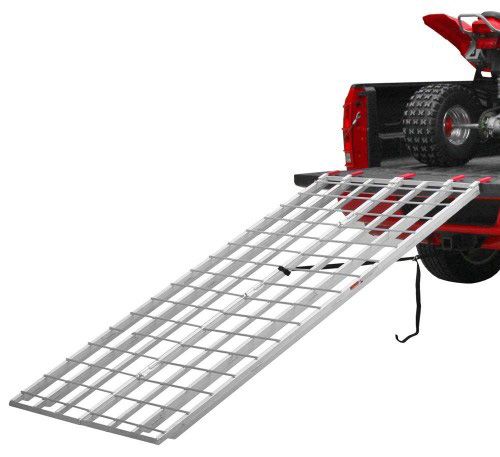 Such fasteners securely hold the motorcycle in an upright position.
Such fasteners securely hold the motorcycle in an upright position.
Two people are required to load the motorcycle on the narrow ramp. The motorcycle should be put into the body with the engine off. Do not try to drive into the body "on your own". Technically, such loading is possible, but this is more of a dangerous trick than a convenient method for everyone.
1. Assemble the ramp and support it against the back of the pickup truck.
2. Connect the center of the ramp and the lug in the vehicle's bumper with a strap. Tighten the strap securely. This will prevent the ramp from rolling back under the weight of the bike.
3. Together, roll the motorcycle with the engine off onto the ramp.
4. When the motorcycle is almost completely in the pickup truck, one person can climb onto the platform and make sure that the front wheel is engaged in the fasteners.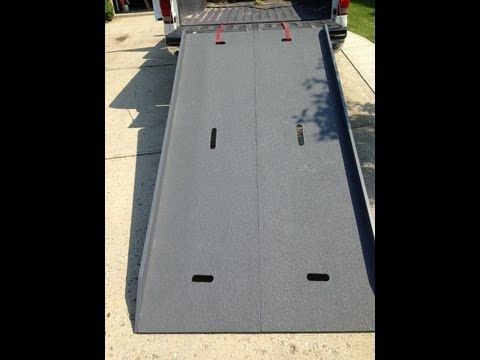
5. To secure the motorcycle, you must firmly tie the front wheel to the fasteners - it securely holds the machine in an upright position. It is also better to tie the rear wheel to special eyelets in the body.
Loading a motorcycle alone
To load a heavy motorcycle into a pickup truck or handle a lighter one by yourself, use the wide loading ramp. Such ramps are usually made retractable and masked under the raised floor of the body. The advantage of the retractable ramp is a secure attachment to the body without any belts.
The wide ramp allows the motorcyclist to drive into the back of the pickup truck "on their own". If necessary, you can lower your legs to prevent the motorcycle from falling over. Taking the bike out is just as easy - on the brakes.
Loading the ATV
Loading the ATV into a pickup truck is much easier than its two-wheeled brother - it does not try to fall on its side at every opportunity, and it does not need to be kept upright on the way.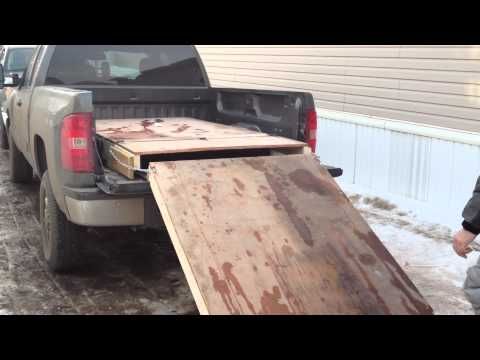 Take two narrow motorcycle ramps, fasten them with belts and boldly drive into the pickup truck "on your own". The ATV does not require special fixtures for mounting in the body. Just tie all four wheels with straps to the eyelets on the bottom of the car's cargo bed.
Take two narrow motorcycle ramps, fasten them with belts and boldly drive into the pickup truck "on your own". The ATV does not require special fixtures for mounting in the body. Just tie all four wheels with straps to the eyelets on the bottom of the car's cargo bed.
Loading a jet ski
A jet ski is the most difficult and capricious load. He cannot drive into the body of a pickup truck on his own, and his bottom needs a very careful attitude.
For the transportation of "waterfowl" you will have to get a special cart, the soft rails of which gently hug the bottom of the jet ski. If desired, the cart can be rolled directly into the water. An electric crane is fixed on the loading platform of the pickup truck, which pulls the vessel into the body.
1. Roll the cart as close to the water as possible.
2. Winch the watercraft onto the cart.
3.